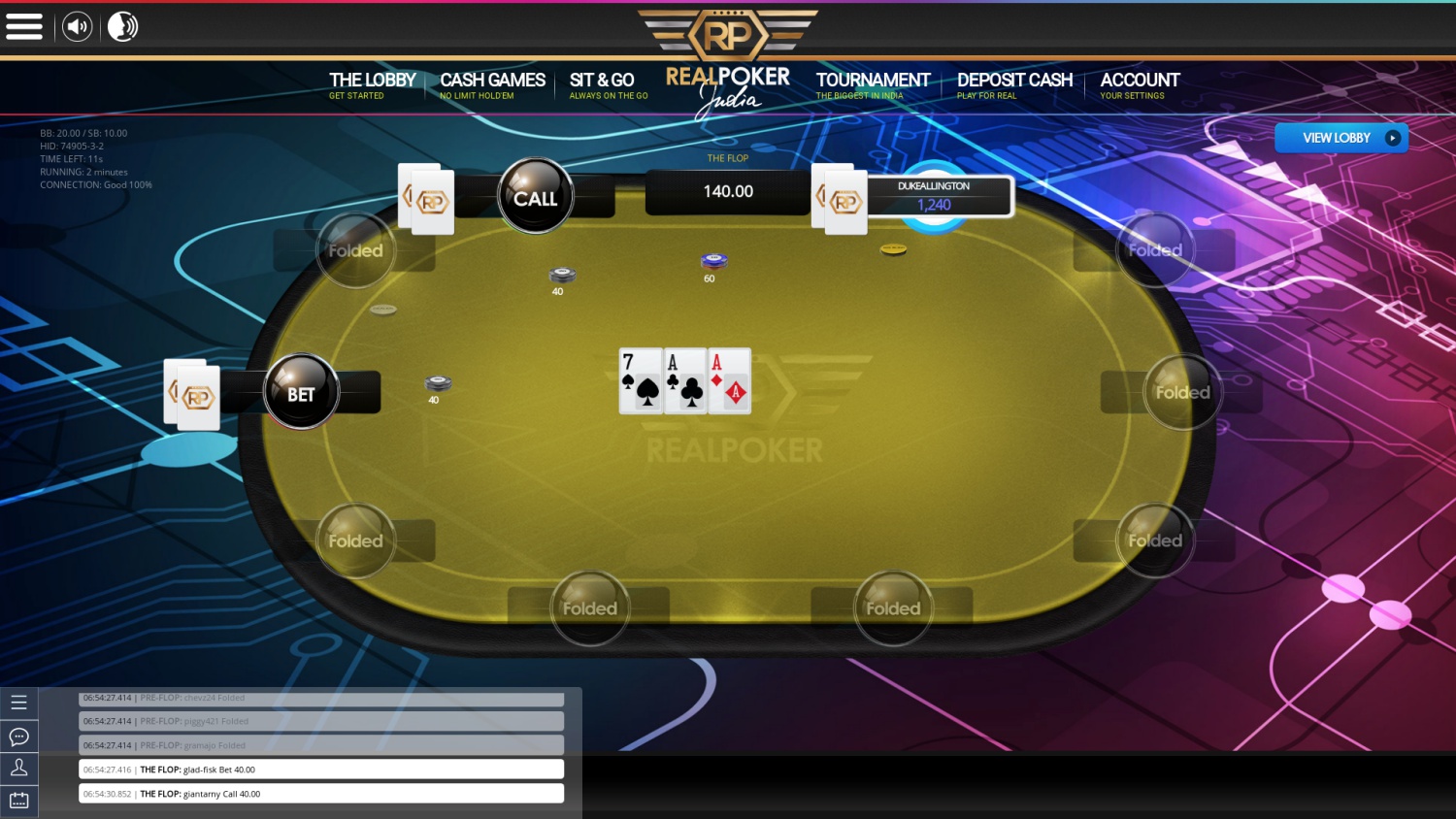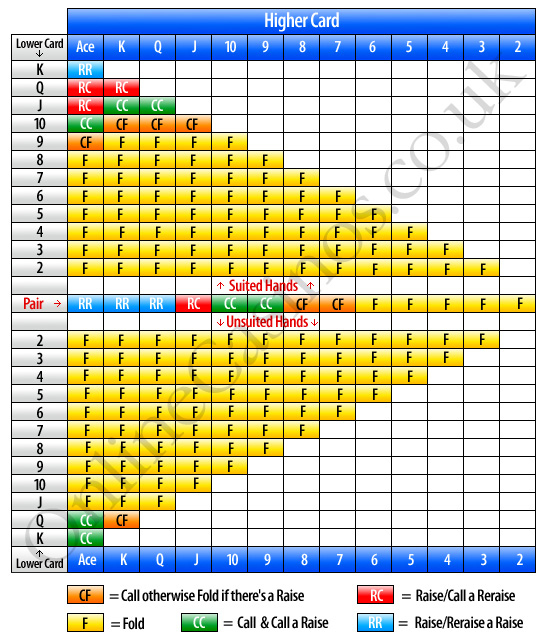Poker Rules Betting And Raising
- Poker Betting Sites
- Poker Betting Order
- Can You Raise Your Own Bet In Poker
- Poker Rules Betting And Raising Cash
- Poker Rules Betting And Raising Rules
In limit poker, for a pot involving three or more players who are not all-in, these limits on raises apply: A game with three or more betting rounds allows a maximum of a bet and three raises. A game with two betting rounds (such as lowball or draw) allows a maximum of a bet and four raises. In Limit Hold’em a raise is always the amount of one bet in addition to the amount of the previous bet. For example: if the big blind is 25¢ and the first player to act would like to raise they put in a total of 50¢ (the big blind + one additional bet).
Ed. note: For those who might have missed it before, we're reprising Robert Woolley's series of articles for poker players who are new to live poker. The series is great for newcomers, and likely useful as well to those with experience playing in casinos and poker rooms.
This article continues the explanation I began last time regarding rules and procedures surrounding poker chips in brick-and-mortar casinos. Today I want to discuss how to handle your chips when making bets and raises. All of the following points apply equally to tournaments and cash games.
How to Handle Chips When Betting
To make a bet, count out the needed or desired number of chips and put them neatly in front of you, several inches beyond your cards. Do not 'splash the pot,' meaning tossing or dropping the chips. They tend to scatter in all directions, making it hard to tell how much you bet and wasting everybody's time while they are gathered up again.

Poker Betting Sites
As soon as you release the chips, they belong to the pot, not to you. However, they are kept in front of you, separate from the pot and from the chips bet by other players, until the end of the round of betting. That way, if there is a raise after your turn, it's clear how much you have already bet and, therefore, how much you will need to add to your bet in order to call the raise.
When putting chips forward for a bet (or raise or call), you can either leave them all in one stack, break them down into a few stacks for easier counting, or lay them down neatly in a row, which makes the number of chips visible to overhead cameras. There is no standard way of doing this. Some dealers will take a stack and break it down; others will take a row of chips laid down and rearrange them into a stack.
Poker Betting Order
You will often see players grab a handful or large stack of chips, reach forward, and 'dribble' one or two at a time until they have deposited the number they want. This is a bad habit that you should avoid, for several reasons.
First, a few casinos have a rule that any chips moved forward past your cards will all be counted as your bet or raise, whether or not you drop them on the felt. Second, you might accidentally drop more than you intended to. Third, this is much slower than counting out the right amount first, then moving them forward all at once. Fourth, other players might accuse you of trying to adjust the size of your bet or raise on the fly while watching their reactions, which is considered shady.
Betting Lines
Some poker rooms have a 'betting line' on the table, and only chips that are moved past this line are considered to have been bet. This is intended to eliminate the occasional ambiguity in determining whether a player moved chips sufficiently far forward to be deemed an intentional bet.
However, betting lines on the felt sometimes cause more problems than they solve, opening up opportunities for angle-shooters to try to trick you.
If you're playing in such a room, be alert for players who move chips forward to a point just short of the betting line in an attempt to manipulate you into responding, so that they can decide whether or not to actually make that bet, based on your reaction.
This is, of course, terribly unethical, but not all poker rooms will do anything about it, so protect your own interests by making sure that the others players' actions are fully completed and clear before you take your turn.
If in doubt as to whether another player's chips have been validly bet or not, ask the dealer to clarify the situation for you. Do not be shy about this. It is both your right and responsibility to know where things stand before you take any action.
How to Handle Chips When Raising
You might think that making a raise would be so simple that it couldn't get messed up. If so, you'd be wrong. In fact, the rules regarding the legal ways to make a raise trip up new players new more often than just about any other aspect of the game.

You need to understand these two basic principles:
- When it is your turn, a verbal indication of your intended action is as binding as the physical action itself.
- Other players have a right to be able to tell unambiguously when your turn is over, so that nobody inadvertently acts out of turn.
These principles work in tandem to produce three equally legitimate ways of making a raise.
First, without saying anything, you can simply slide forward, in one continuous motion, all of the chips constituting your bet, i.e., both the amount needed to call and the extra amount of your raise.

Importantly, you cannot put out some chips, then go back to your stack, pick up more, and move them out, too. Such double motion would violate principle #2 above, because other players would not know whether you were done with your turn after the first bunch of chips was moved forward. For this reason, if you try to go back for more, the dealer will disallow it. This is called a 'string raise,' and it is against the rules everywhere.
Second, you can announce the word 'raise' with no amount specified. This commits you to at least a minimum raise, but not to any particular amount. You can then either move out the entire amount of your bet with one motion, as above, or you can first put out the number of chips needed to constitute a call, followed by a second motion with the amount of your raise.
In this case, the verbal announcement before your first motion alerts the other players that more chips will be coming, so that you are not in violation of principle #2 above. However, your raising chips must be all in one motion, as in the first example.
Third, you can verbally announce both 'raise' and the intended amount. For example, if the current bet is $10, you can say 'Raise to 25' or 'Raise, make it 25.' Saying just '25' technically has the same force. However, it's better to start with the word 'raise,' because poker players and dealers are tuned into that word, and hearing it has an alerting effect that a number alone does not have.
Regardless of how you make the announcement, once you have done so, you are committed to that exact amount, and it therefore does not matter how you put the $25 in chips in front of you.
My next article will conclude the discussion of poker chips with a number of miscellaneous chip-related topics, including the 'oversize chip rule,' handling chips and 'chip tricks,' making change, and even some talk about collecting chips.
Robert Woolley lives in Asheville, NC. He spent several years in Las Vegas and chronicled his life in poker on the 'Poker Grump' blog.
Tags
cash game strategylive casino pokerbeginner strategyrulesetiquettechips
The Basic Rules of Pot Limit Omaha (PLO)
Omaha is a poker variant in which each player is dealt four “hole” cards (cards that the other players can’t see) and then share a five card board. It is similar to Hold’em in its play, with flop, turn, and river cards dealt in succession on the board, interspersed with betting rounds. The most common betting structure for Omaha is Pot Limit, in which players can only bet the size of the pot, including their call.
The play begins with each player being dealt four cards. Unlike Hold’em, players must play exactly two cards from their hand and exactly three from the board. Hand rankings are the same in Omaha and Hold’em, with a high card being the worst and a royal flush the best possible hand.
In PLO, the play starts with a small and big blind, which rotates each turn. The first player after the big blind (Under the Gun – UTG) may fold, call the big blind, or raise up to the “pot limit.” If the blinds are $1 and $2, the UTG player can bet up to $7. Things then get a little tricky. The second player can now fold, call the $7 or bet up to $24. This betting structure takes a while to get used to. See our How to Calculate Pot Limit article for more examples. When in doubt, if you would like to bet the maximum, you can always announce that you bet “pot” and the dealer will figure out the amount for you.
Can You Raise Your Own Bet In Poker
Note that starting hand values are quite different than in Hold’em, so you’ll want to familiarize yourself with these differences before playing Omaha. The “Advice” button in our PLO simulator can help you with this.
Hand equities run much closer together in Omaha, and thus more players will generally stay to see the flop than in Hold’em. With the ability to select the best two of a four card hand, winning hands in Omaha also tend to be quite strong. Single pairs and two pairs are rarely likely to take down the pot, and players should be drawing to nut straights and flushes if they decide to draw.
Poker Rules Betting And Raising Cash
As you might imagine, Omaha pots can grow quite big, and with pre-flop hand equity advantages rarely larger than 60% variance swings in PLO can be big as well. The PLO player will need a larger bankroll than the typical No-Limit Hold’em player for that reason.